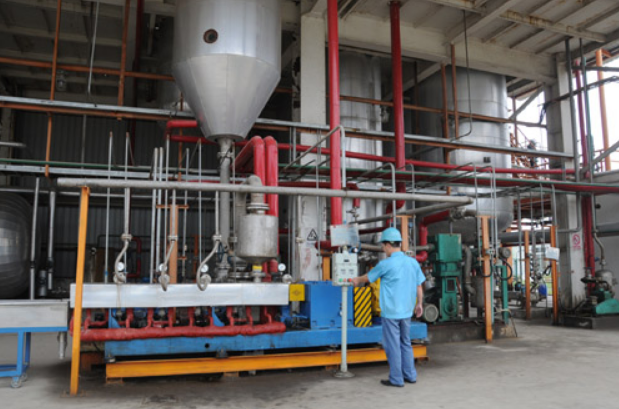Thermoplastic Polypropylene Carbonate (PPC plastic) is widely used in applications such as non-woven fabrics, agricultural wrapping films, and medical wrapping films. PPC plastic is notable for being fully recyclable and biodegradable, making it a leading material in terms of environmental friendliness. The complete decomposition of PPC plastic contributes significantly to its eco-friendly reputation. Up-to-date information on the mechanical properties, chemical properties, formation, and decomposition processes of PPC plastic is crucial for manufacturers to devise the most optimal production plans. This valuable information will be detailed below.
1. What is Polypropylene Carbonate?
1.1 Definition of Polypropylene Carbonate
Polypropylene Carbonate, commonly known as PPC plastic, is a thermoplastic material and part of the carbon sequestration group. PPC plastic is notable for its ability to completely decompose. It is soluble in dichloromethane, chlorinated hydrocarbons, lower ketones, and ethyl acetate, but insoluble in alcohol, water, and aliphatic hydrocarbons. This amorphous adhesive has a glass transition temperature between 25°C and 45°C. The performance of Polypropylene Carbonate varies under different catalytic conditions, which is a crucial consideration in PPC plastic production to meet business needs and optimize costs.
The material Polypropylene Carbonate was first created in 1969 through the copolymerization of epoxide and CO2, catalyzed by diethylzinc and water. Since then, PPC has garnered significant interest and research from experts worldwide.
1.2 Structure of PPC Plastic
Polypropylene Carbonate (PPC plastic) is created from CO2 and PO, endowing it with strong barrier properties. The chemical structure of PPC plastic features an ether bond (-O-) on the main chain axis. This distinctive bond enhances the flexibility and solubility of PPC plastic in organic solvents.
Key Functional Groups in PPC Plastic
- Ether (-O-): The presence of ether bonds allows the molecular chains to separate easily, contributing to the material's flexibility.
- Polar Carbonyl (-CO-): This bond group enhances intermolecular forces and molecular stiffness in PPC plastic, improving its mechanical properties.
- Ester (-COO-): Esters facilitate the hydrolysis of PPC plastic over time, contributing to its biodegradability.
- Hydroxyl (-OH): Hydroxyl groups influence the thermal stability of PPC plastic. At high temperatures, alcohols decompose lipids, leading to degradation and confirming that PPC plastic cannot withstand high temperatures.
- Methyl (-CH3): Methyl groups impact the properties of PPC plastic. Larger methyl groups make the material harder and increase its resistivity.

PPC Plant
2. Properties of Polypropylene Carbonate (PPC plastic)
2.1 Mechanical Properties of PPC Plastic
To comprehensively evaluate any material, it is essential to consider its mechanical properties, such as tensile strength, elongation, breaking strength, elastic modulus, and melting strength. PPC plastic has been studied extensively, revealing a glass transition temperature (Tg) of approximately 40.3°C. As the temperature increases from below Tg to the glass transition zone, structural changes occur, and the energy storage modulus decreases from 1000 MPa to 10 MPa. Furthermore, the modulus of PPC plastic can increase at both temperatures above and below Tg as the average molecular weight increases from 109 kg/mol to 227 kg/mol.
Overall, the mechanical properties of PPC plastic are characterized by poor thermal resistance, amorphous structure, and low molecular bonding force, resulting in relatively weak mechanical strength.
2.2 Recyclability of PPC Plastic
A significant advantage of PPC plastic is its recyclability. PPC plastic is a polymer that can be recycled and decomposed within a certain period. The raw materials for PPC plastic production are CO2 and PO. Upon degradation, PPC plastic breaks down into CO2 and small amounts of other non-toxic substances. This process ensures that no new CO2 is released into the environment throughout the lifecycle of PPC plastic, from production to recycling. The carbon sequestration ability of PPC plastic is a special advantage, allowing it to be flexibly recycled for various applications.
Additionally, the raw materials, CO2 and PO, are relatively inexpensive, helping manufacturers optimize production costs. The recycling and decomposition process of PPC plastic provides significant environmental benefits. Its flexible recyclability helps reduce plastic waste globally and contributes to mitigating the greenhouse effect.
2.3 Decomposition of PPC
One of the most notable characteristics of PPC plastic is its ability to completely decompose after disposal. Several methods can achieve this decomposition:
- Thermal Decomposition: PPC plastic degrades significantly when exposed to heat, which can affect product quality during thermal exposure. However, thermal decomposition is a popular method for breaking down PPC plastic waste. In the temperature range of 180°C to 240°C, PPC plastic begins to decompose. While this method is relatively quick, it produces exhaust gases during the heating process.
- Biodegradation: This process is considered environmentally friendly. When PPC plastic waste is buried in soil, it interacts with various organisms and plants that facilitate rapid decomposition. Microorganisms directly corrode the surface of PPC plastic, breaking the bond chains and leading to complete decomposition.
- Hydrolytic Decomposition: Similar to biodegradation, hydrolytic decomposition is one of the most optimal processes for minimizing environmental pollution during decomposition. This process involves dissolving and breaking the bonds in PPC plastic's structure in a solvent environment, causing the material to gradually degrade.
These decomposition methods ensure that PPC plastic can be effectively and sustainably broken down, reducing its environmental impact.
3. Application of Polypropylene Carbonate (PPC Plastic)
PPC plastic is one of the most environmentally friendly materials due to its non-toxic nature, ease of decomposition, recyclability, and good biocompatibility. By enhancing its properties, PPC plastic is widely used in various applications, including:
- Textile Technology: PPC plastic is frequently used in the production of non-woven fabrics for items such as masks, napkins, and handkerchiefs. These non-woven fabrics are environmentally friendly and decompose easily after use, making them ideal for disposable products.
- Packaging Materials: The non-toxic nature of PPC plastic, combined with antibacterial materials like nanoparticles, organic acids, and polymers, allows for the creation of safe packaging materials for consumer health. PPC plastic is used in some food packaging and medical equipment to meet the demands of mass production while optimizing costs.
- Protective Films: PPC plastic is used to produce protective films for agricultural applications. Its ability to decompose easily and permeate air and water vapor makes it suitable for protecting crops like mushrooms, preserving their quality.
- Medical Bandages: PPC plastic is used to produce synthetic fiber membranes for medical bandages using electrostatic spinning technology. Tests show that these bandages meet safety standards for human health and inhibit bacterial growth by up to 69.3%.
By leveraging these applications, PPC plastic contributes significantly to environmental sustainability while meeting diverse industrial and consumer needs.
















